This article shows how to install Windows Server 2008 R2 on VirtualBox. Windows 2008 R2 server is available in 64-bit version only, so your computer processor and motherboard should support 64-Bit architecture and VT (Virtualization Technology) to carry out this installation.
Even if you are using the 32-bit version of Operating Systems such as Windows 7, Vista and XP on the host computer, still it’s possible to use 64 Bit operating systems as a guest on VirtualBox. To make sure your computer processor and motherboard support this feature read this post where you will find relevant tools for AMD and Intel processors. Once the result confirms that your PC is 64-bit ready then you can proceed with the installation of Windows Server 2008 R2 on VirtualBox.
Follow the steps to Install Windows Server 2008 R2 on VirtualBox.
1) Create New Machine.
2) Select Windows 2008 R2 as the guest OS version.

3) Set memory size to 1024MB, and create a new hard disk with 20GB space. You can increase the RAM and hard disk size if your physical computer has enough resources.

Select the Dynamically Expanding storage option. Set the disk size and location of the disk file on the next screen.
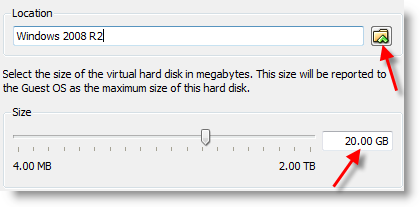
4) Press Finish to complete disk and virtual machine creation.
5) Click on the storage option in virtual machine configuration settings.

6) Press ‘Empty’ IDE controller as mentioned below to insert the installation DVD or ISO image. If you have an installation DVD, then insert it into the host DVD drive and select the ‘Host Drive- Drive letter’ mentioned below. So when you boot the Windows 2008 R2 virtual machine, it will read your host physical DVD drive. Since I have an ISO file, I’m mounting it by clicking on the Folder arrow button.

7) Make sure the following options are correct under system setting of the virtual machine. You can click on System to view the settings.

Processor – 1 and Enable PAE/NX enabled.

Hardware Virtualization Enable VT-x/AMD-V should be enabled.

8) Now start the Windows 2008 R2 virtual machine in VirtualBox.
The installation will go smoothly if all settings are correct. No need to explain every installation step.
9) Here is the working Windows server 2008 R2 on VirtualBox below.
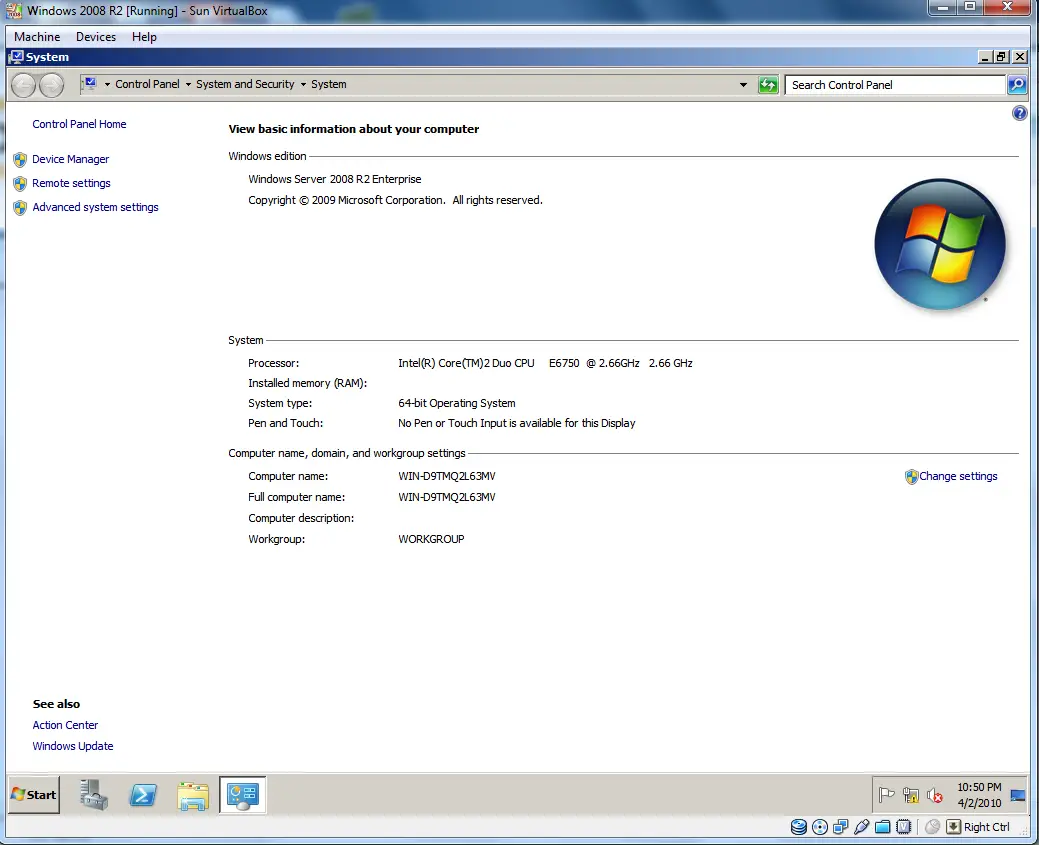
10) It is essential to install VirtualBox guest additions to get better mouse integration, display settings, folder share and improved network performance. You can mount the built-in guest additions ISO file inside the guest VM from the menu bar.
Restart the virtual machine after the installation to see the changes & improvements.
There you go, you have the working Windows 2008 R2 64-bit Server OS on your X86 host OS and VirtualBox. You can enable the seamless mode of the virtual machine to work on Windows 2008 R2 VM from the host OS desktop.
NOTE: Since Windows 2008 R2 is a pretty outdated server operating system currently, it is not recommended to use in the production environment. In case, you need to do some testing and development on this older server OS, you can use this guide to install it on a dedicated VirtualBox environment.
We highly recommend using the latest Windows Server Operating Systems, such as Windows 2022 or Windows 2019 servers.


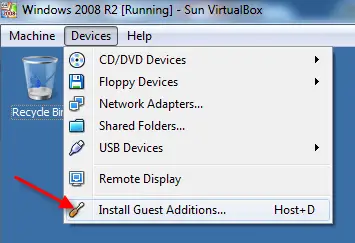

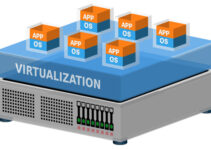
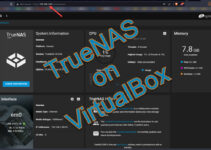
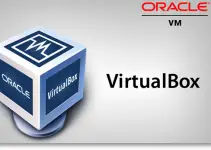

I already installed a Linux server on Virtual box… but never thought of a windows server! 😀 This might be the perfect time for it! Thanks for the great post bro 😀
Yes, VirtualBox supports Windows products also very well.
Thanks for the tip bro. Does it work on vmware too?
Yes, it work in Vmware tool. I have written about setting up Windows 2008 R2 Failover cluster in VMware workstation. Check it out.
https://www.sysprobs.com/setup-windows-2008-cluster-vmware-workstation
I have VirtualBox 3.1.6 and in first drop-down list I have no option Windows 2008 (64 bit), only “windows 2008”. I guess it’s 32 bit OS. If yes, how do I install 64bit?
Sorry Gleb, I think your processor doesn’t support 64Bit architecture. Read this post to check it.
https://www.sysprobs.com/64bit-guest-os-32bit-host-os-vmware
Download the tool and test.
you shoud install the lates version prog vbox or install win32-bit(server,…)
I downloaded Intel Processor ID utility – it says my proc does support 64bit architecture. the problem is, it doesn’t support intel virtualization technology(VT). May be that’s the case?
Glad to find this post it helped me a bit – proved I wasn’t crazy
https://www.sysprobs.com/install-run-windows-2008-r2-x86-sun-virtualbox
I was trying to install Windows 2008 R2 on X86 Sun VirtualBox on a fully patched new install of Solaris. I could load it and restart the VM a few times but once I powered it off and powered it on it failed. Loaded the OS about ten time (only takes a few minutes) but it always started ending up in a permanent “black screen” when powering up the VM.
So I rolled back form VirtualBox 3.2.0 to VirtualBox 3.1.8 and it all worked fine. Obviously there is a bug in the latest release with respect to my OS and HW (stock sun). I used the exact same configuration (in this post) for both 3.1.8 and 3.2.0 – only 3.2.0 doesn’t work.
#[3]: cat /etc/release
Solaris 10 5/09 s10x_u7wos_08 X86
Copyright 2009 Sun Microsystems, Inc. All Rights Reserved.
Use is subject to license terms.
Assembled 30 March 2009
#[4]: uname -a
SunOS mocrome 5.10 Generic_142901-02 i86pc i386 i86pc
#[5]: prtdiag | head -2
System Configuration: SUN MICROSYSTEMS SUN FIRE X4275 SERVER
BIOS Configuration: American Megatrends Inc. 07060215 06/19/2009
As you say at the begining:
Even though you are running 32 Bit Operating Systems, such as 32 Bit Windows 7 ,Vista and XP as host, still it’s possible to run 64 Bit operating systems as guest on X86 VirtualBox.
How???? Please ¡¡¡ Google doesn´t help :-((
I have the same scenario as Gleb:
”
Gleb says:
April 26, 2010 at 3:04 am
I have VirtualBox 3.1.6 and in first drop-down list I have no option Windows 2008 (64 bit), only “windows 2008″. I guess it’s 32 bit OS. If yes, how do I install 64bit?”
Thanks in advance
@jose,
Physical processor should support “64 Bit architecture” and “Hardware Virtualization Technology (VT)” in BIOS
More information available here,
https://www.sysprobs.com/64bit-guest-os-32bit-host-os-vmware
I was initially getting blue screen when trying to install Windows Server 2008 R2 64bit on VirtualBox. I ran across your article, followed the step-by-step guide, & the installation went smoothly. Thanks for taking the time to publish and share you knowledge!
@Sean C,
Thanks for dropping a comment.
followed the instructions and by the step 5 I got an ide controller with cd/dvd empty and an sata controller with the hard disk of 20GB attached to it (server08r2b64.vdi), then on the empty cd at ide controller I chose the /home/lee/IT/MCSE/MS Tools/7600.16385.090713-1255_x64fre_server_eval_en-us-GRMSXEVAL_EN_DVD.iso and started the vm. it shows the initial screens of process installation to setup up language, time and keyboard and after hit “install now” right after pops up a screen saying that : “the cd/dvd drive device driver is missing. If you have a floppy disc,cd, dvd or usb flash drive please insert it now. It tells also that I can safely remove the windows cd of the cd/dvd drive”. under the message it presents three buttons: browse, ok and cancel.
????? host ubuntu 1004 kernel 2.6.32.29 gpae, amd 9650, 4gram,
I have the same problem with missing drive device driver. Do you have found a solution?
VirtualBox 4.0.8 r71778
Host: Windows 7 (x64)
NOT YET , SWITCHED TO VMWARE INSTED !
I have solved the problem by now. I have downloaded the ISO again. But now with Internet Explorer 9 (before with Chrome). ISO size is different. The new one is bigger. Now it works fine with VirtualBox. No more drive device driver problems during the installation.
i am getting below error when trying the above steps
VT-Xx/AMD-V hardware acceleration has been enabled, but is not operational. Your 64-bit guest will fail t detect a 64-bit CPU and will not be able to boot
Please ensure that you have enabled VT-x/AMD-V properly in the BIOS of your host computer
i m using windows 7 with 64 bit, i try to install windows 2008 64bit using virtual box, when i check in version column there is no windows 2008 64 bit, instead i am seeing only windows 2008
we have installed windows 2008 64 bit on intel processor base system and created a virtual machine, it is good when we run intel processor base system the problem occur when we try to run the same virtual machine on AMD processor quad core system blue screen occur and virtual machine restart , is their any way to fix the problem.
Hi
at first thanks for this great article, it really help me, now I’m having an issue with windows installation, it seems that the installer is not recognizing the virtual disk for installation, I don’t know if someone has had the same issue as me, any help will be really appreciated.
Thanks
hi
i install windows server 2008 (32bit) on my virtualbox 4.1.6 but the problem is that it couldn’t detect the network adapter . host os windows 7 on hp pavilion dm4.
anyone can help plz
You should select the Intel PRO/1000 T Server adapter in the VBox GUI Windows Server 2008 should have a driver for that one.
Hi
i have recently installed Virtualbox on my Mac OS X (Lion) and also downloaded Windows Server 2008 R2, i have tried to install it into the Virtualbox, however after having followed all the instructions and ensuring all the settings are correct, it won’t install Server …a black box comes up with the following message: FATAL: No bootable medium found! System halted
What does this mean? And what can I do to successfully install Server 2008 onto my Virtualbox please.
Your help is most appreciated , many thanks
Daniela
Hi,
Need some help. I installed virtualbox on windows xp Host OS. Installed windows 2008 server successfully on virtual machine with the above steps. Now i want to install Redhat linux also on the same virtual box. Can someone point me how to do that.
Thanks,
JK
install w server 2008 r2 on virtual box but “no drive found” how to solve this?
You do all this great work and do not say anything about the most vexing thing of all – how the heck do you log into 2008 once it is installed. What is the osx key combo for ctrl + alt + del?
In VirtualBox (Windows) CTRL+ALT+DEL is HOTKEY+DEL. The default hot key is RIGHT-CTRL. You can see the hot key down right in the status bar of your virutal machine.